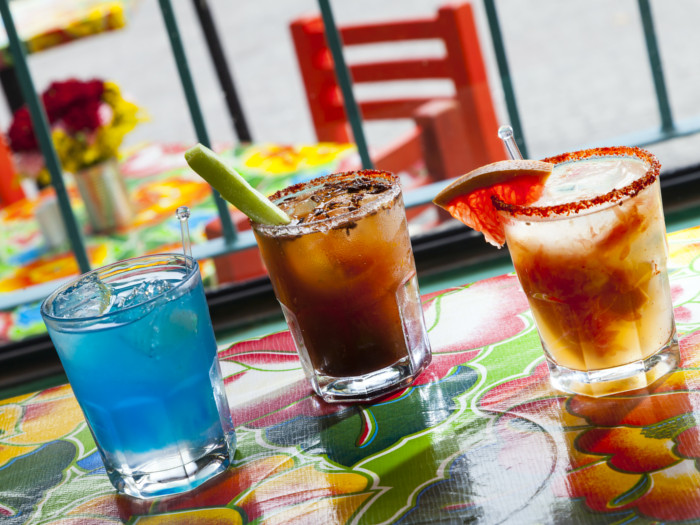The debate over mezcal vs tequila has been fought in bars across the world for a very long time. The two Mexican spirits share an intriguing history and a much-loved cultural role. But mezcal is often confused with its more famous offshoot, the tequila. Even people who know that they are not the same are usually confused about what makes them different. Let’s learn more about what makes each unique.
Mezcal vs Tequila
Although both are made from the agave plant, mezcal, and tequila are distinct Mexican spirits with different production methods and flavors.
What are Mezcal and Tequila?
Mezcal and tequila are both distilled alcoholic spirits made from agave plants. Both originate from Mexico and are an intrinsic part of the national culture. Legally tequila and mezcal can only be made in Mexico. Mezcal does not have the same legal protections, but we’ve never heard of mezcal produced outside Mexico. They both share the same history where the Spanish conquistadors refined the local spirit of Mexico. These were largely the similarities. Now for the differences:
Source
According to the book “Divided Spirits: Tequila, Mezcal, and the Politics of Production” by Sarah Bowen, tequila is a spirit that can only be made from blue agave, whereas Mezcal is a spirit made from any type of agave. In other words, tequila is actually just a type of mezcal. Mezcal is to tequila what rectangles are to squares! [1]
Origin
- Mezcal: Mezcal can only be made in designated provinces of Mexico, but over 90% comes from the state of Oaxaca.
- Tequila: Tequila can only be made in the state of Jalisco, as well as some assigned municipalities of four other Mexican states.

Mezcal vs Tequila Photo Credit: Shutterstock
How to Make?
The real difference between the mezcal vs tequila lies in their production. For both spirits, the heart of the agave plant known as ‘piña’ is crushed to extract its liquid.
- Mezcal: The mezcal production process starts by heating the piña in underground pits, usually lined with rock, to create a smoky oven.
- Tequila: For tequila production, the piña is heated in large batches above the ground. [2]
Production House
Mezcal: It is produced by small artisanal producers. It is a labor-intensive process that requires hard physical work. It is still hand-crafted, where the flavors are carefully nurtured over years of the agave plant’s growth. It is also why mezcal is usually more expensive.
Tequila: It is made by large corporations with all the modern techniques of distillation and alcohol production.
Alcohol Percentage
Alcohol by volume (ABV) is the standard measure of alcohol content in any beverage, expressed as a percentage. Tequila and Mezcal have the same ABV range, from 38 percent to 55 percent. Given the high alcohol content, both are typically served in small quantities. A standard serving is 1.5 ounces [3]
Taste
- Mezcal: Mezcal has a greater range of specialty flavors, as it is made in smaller batches. The type of agave plant used to make it varies. The slow, underground cooking often infuses the spirit with an earthen, smoky flavor that is considered characteristic of the beverage.
- Tequila: Tequila has a pure flavor, softer than whiskey or gin, and often delivers a melon-like after-tone. There is less variation in taste between distilleries and brands of tequila than there is with Mezcal. [4]
Types
- Tequila: Based on the amount of aging that tequila undergoes, it can be divided into five clear distinctions, from least to most aging: Silver (Blanco), Gold (Oro), Reposado, Añejo, and Extra Añejo.
- Mezcal: Depending on the type of agave used and the amount of time spent aging, the five main types of mezcal include Espadin, Tobala, Tobaziche, Tepeztate, and Arroqueño.
How to Drink?
- Mezcal: Mezcal is an artisanal drink to be savored straight, perhaps with a side of ground-fried larvae, ground chili peppers, or a slice of lemon or lime for the more traditional.
- Tequila: Really good tequila should also be savored. However, tequila shots are a common and fun drinking method. Shots are preluded with a lick of salt and followed with a slice of lemon or lime.
Which is Better?
- Mezcal: The more specialized of the two and with a price tag to match, mezcal is considered the higher quality of the pair.
- Tequila: Easier to find and cheaper to buy, tequila is preferred for cocktails or casual parties. However, its quality tops off at a certain level.
Adverse Risks of Alcohol Consumption: Alcohol consumption can cause severe short term and long term health risks, if not done in moderation. Risks range from violent behavior, injuries, and an increased risk to overall health due to chronic diseases. According to The 2015-2020 Dietary Guidelines for Americans, if alcohol is consumed, it should be done in moderation. The guidelines define moderate drinking as up to 1 drink per day for women and up to 2 drinks per day for men, which applies to adults of legal drinking age. However, different countries have different legal guidelines on alcohol consumption. [5] [6]
